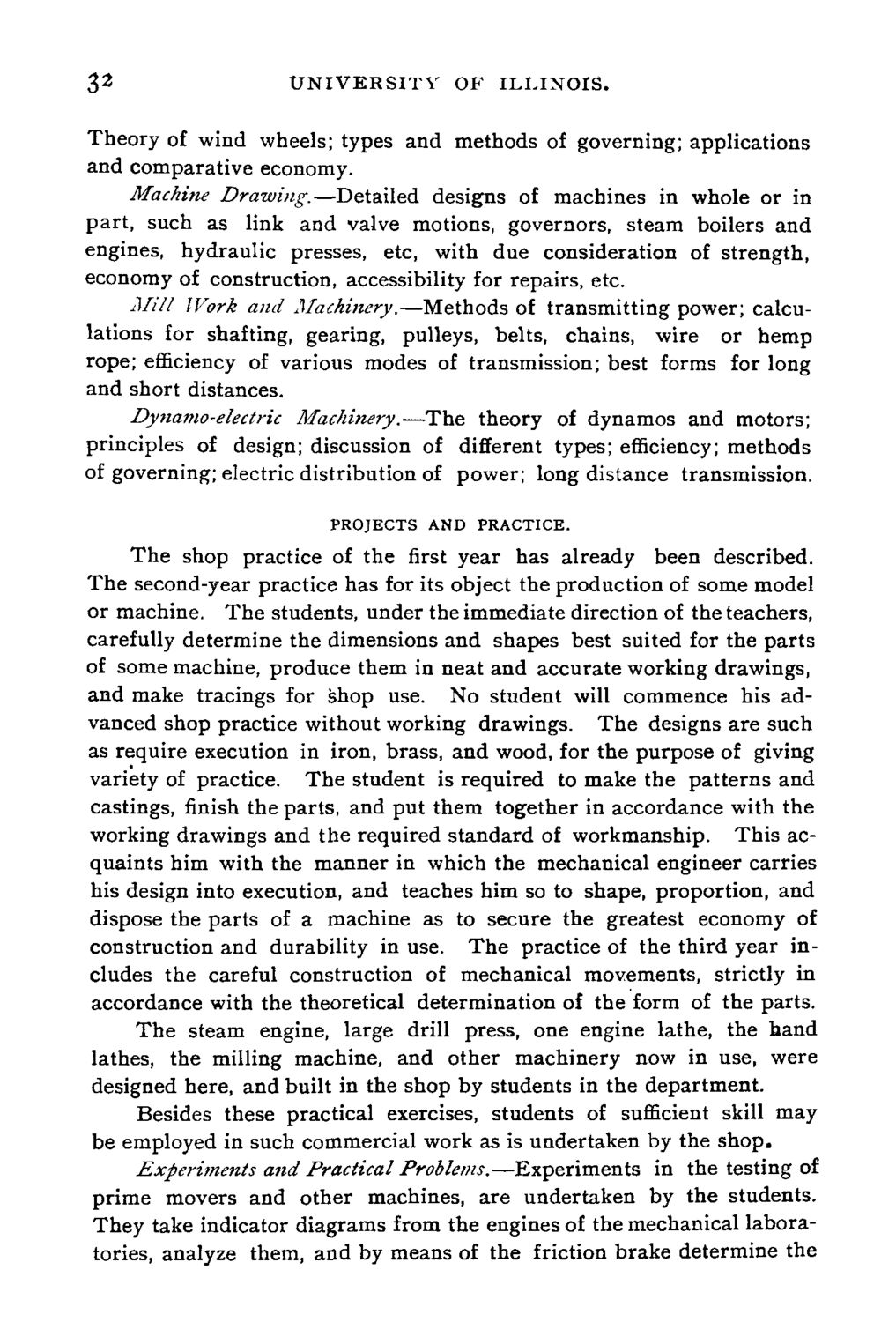| |
| |
Caption: Course Catalog - 1890-1891
This is a reduced-resolution page image for fast online browsing.

EXTRACTED TEXT FROM PAGE:
32 UNIVERSITY OF ILLINOIS. Theory of wind wheels; types and methods of governing; applications and comparative economy. Mac/iine Drawing.—Detailed designs of machines in whole or in part, such as link and valve motions, governors, steam boilers and engines, hydraulic presses, etc, with due consideration of strength, economy of construction, accessibility for repairs, etc. Mill Work and Machinery.—Methods of transmitting power; calculations for shafting, gearing, pulleys, belts, chains, wire or hemp rope; efficiency of various modes of transmission; best forms for long and short distances. Dynamo-electric Machinery.—The theory of dynamos and motors; principles of design; discussion of different types; efficiency; methods of governing; electric distribution of power; long distance transmission. PROJECTS AND PRACTICE. The shop practice of the first year has already been described. The second-year practice has for its object the production of some model or machine. The students, under the immediate direction of the teachers, carefully determine the dimensions and shapes best suited for the parts of some machine, produce them in neat and accurate working drawings, and make tracings for shop use. No student will commence his advanced shop practice without working drawings. The designs are such as require execution in iron, brass, and wood, for the purpose of giving variety of practice. The student is required to make the patterns and castings, finish the parts, and put them together in accordance with the working drawings and the required standard of workmanship. This acquaints him with the manner in which the mechanical engineer carries his design into execution, and teaches him so to shape, proportion, and dispose the parts of a machine as to secure the greatest economy of construction and durability in use. The practice of the third year includes the careful construction of mechanical movements, strictly in accordance with the theoretical determination of the form of the parts. The steam engine, large drill press, one engine lathe, the hand lathes, the milling machine, and other machinery now in use, were designed here, and built in the shop by students in the department. Besides these practical exercises, students of sufficient skill may be employed in such commercial work as is undertaken by the shop. Experitnents and Practical Problems.—Experiments in the testing of prime movers and other machines, are undertaken by the students. They take indicator diagrams from the engines of the mechanical laboratories, analyze them, and by means of the friction brake determine the
| |